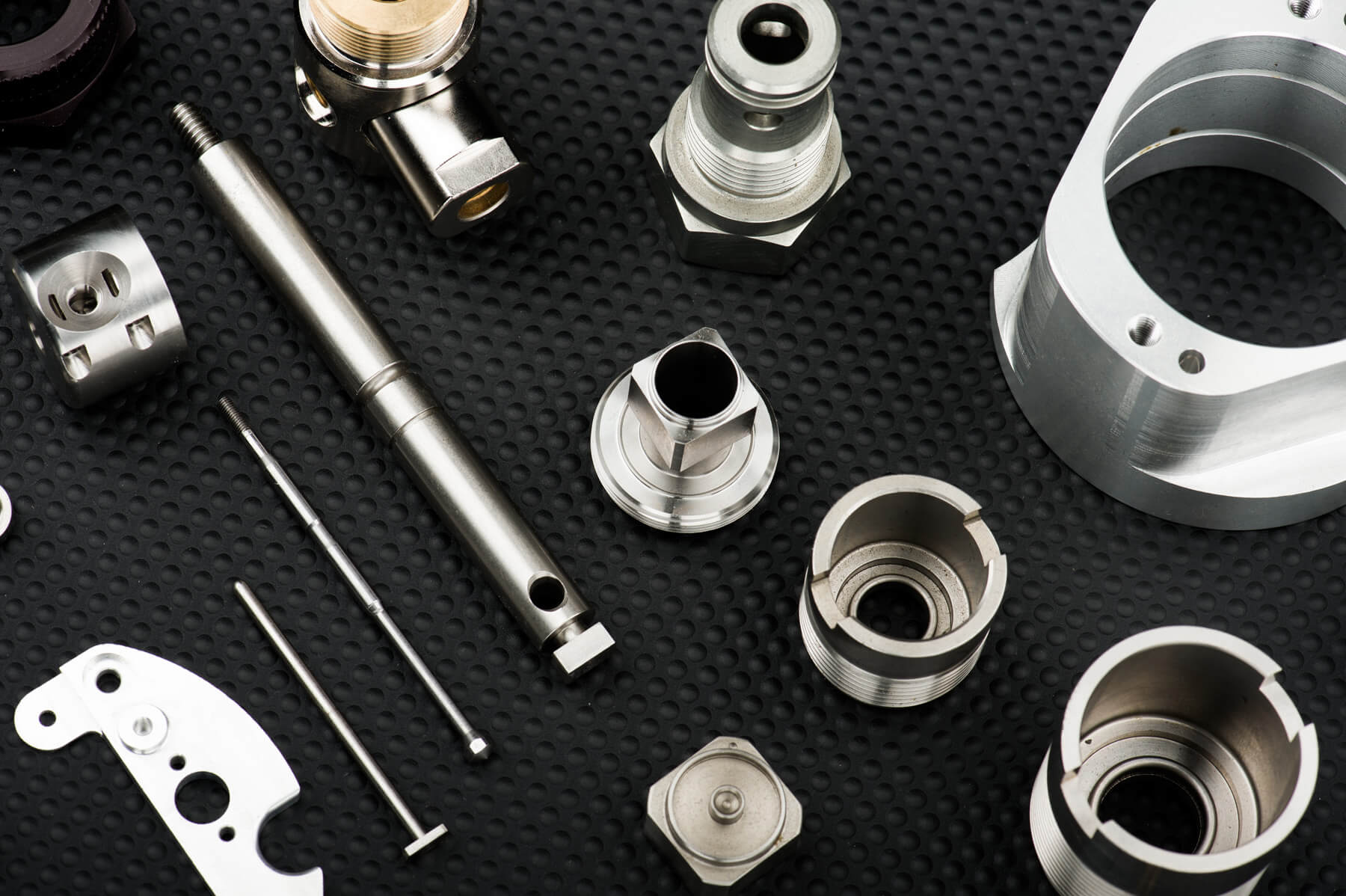CNC Machined Parts Basics
In today’s world, CNC machined parts are everywhere and it’s easy to see why. These parts are inexpensive, precise and efficient, making them an integral part of most machinery.
But what exactly are machined parts? And why are they so important? In this article, I have gathered all the latest information on CNC machining and CNC machined parts. Get an in-depth look at CNC machined parts materials, tolerances, benefits, design guidelines, and CNC machining services.
1.What are CNC machined parts?
A machined part is a part that is made using a machining process. But what exactly is machining? Machining involves using subtractive cutting machines such as mills, lathes and grinders to create the desired part. While these machines use different technologies, the end goal is the same – to remove material from the workpiece and create the desired shape.
Machining can be a manual or digital process.
- Manual machining – A skilled machinist will use a manually operated cutting machine to shape the part.
- Digital machining – As the name implies, this is an automated cutting method that involves the use of a computer numerical control (CNC) machine. In this digital manufacturing process, pre-programmed instructions are fed into the CNC machine and parts are cut according to those specifications. The result? Machined parts with unparalleled precision, uniformity, and efficiency.
CNC machines are a revolutionary technology in the manufacturing industry. With online CNC machining services, you can easily get CNC parts that fit your unique business needs. That being said, manual machining and other manufacturing processes such as molding, casting, and forging still have a place.
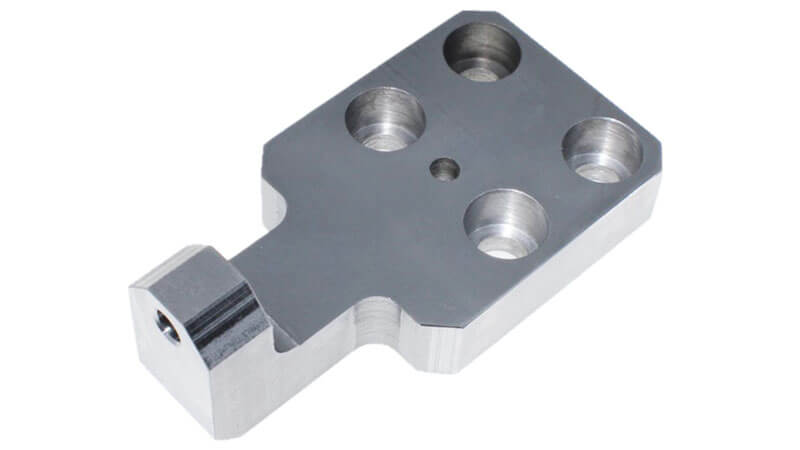
2.Materials Used for CNC Machined Parts
CNC machining can process a wide range of materials from metals to plastics and ceramics. However, not all machined materials are created equal. When choosing a material for CNC machined parts, I recommend that you consider factors such as cost, part weight, conductivity, heat resistance, surface finish, and the intended use of the part.
Additionally, some CNC machined materials are easier to machine than others. Particularly hard materials are difficult to cut and can damage cutting tools. The manufacturing process also generates strong vibrations that affect the accuracy and surface finish of the CNC machined parts.
Conversely, materials that are too soft tend to bend under the action of cutting forces, which of course affects the quality of CNC machined parts.
Custom CNC machining shops can provide recommendations on the best materials for your specific project. In this section, I will introduce some materials that CNC machines often use.
1) Metals
Metals are one of the most commonly used materials in CNC machining services. Metal parts have a wide range of industrial applications due to their electrical conductivity, high strength, and good mechanical properties.
Different metals have different outstanding characteristics. For example, stainless steel is popular for its corrosion resistance, versatility, and high strength. On the other hand, we will use aluminum because of its light weight, thermal conductivity, and corrosion resistance.
The most commonly used metals in CNC machining services include aluminum, stainless steel, copper, titanium, magnesium, zinc, and mild steel. Sometimes, we may use metal alloys in the production of mechanical parts. Bronze is a popular metal alloy that is favored for its beautiful surface finish, ductility, and chemical resistance.
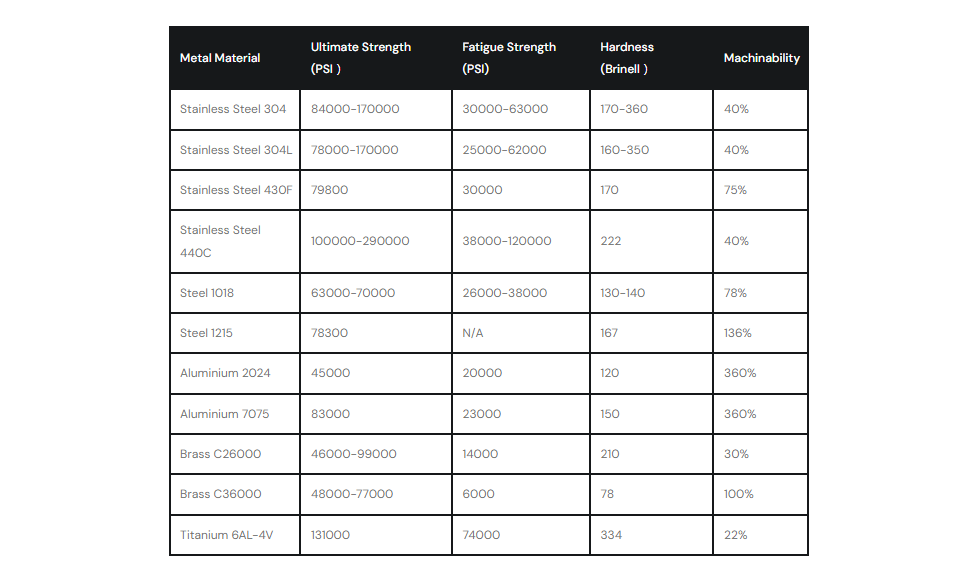
2) Plastics
Another material used in CNC machining is plastic. Plastic parts are lightweight, versatile, and corrosion-resistant. Common plastics used in CNC machining services include nylon, acrylic, polycarbonate, ABS, PVC, polyethylene, and Delrin.
Due to their versatility, plastic parts are widely used in consumer electronics, medical devices, and the automotive industry. Plastic parts are also used to make electrical insulation parts.
In addition to metals and plastics, CNC machining centers also use ceramics and composites to manufacture parts. Composite materials are composed of two or more component materials with different properties. They have a matrix material such as fiberglass and epoxy resin.
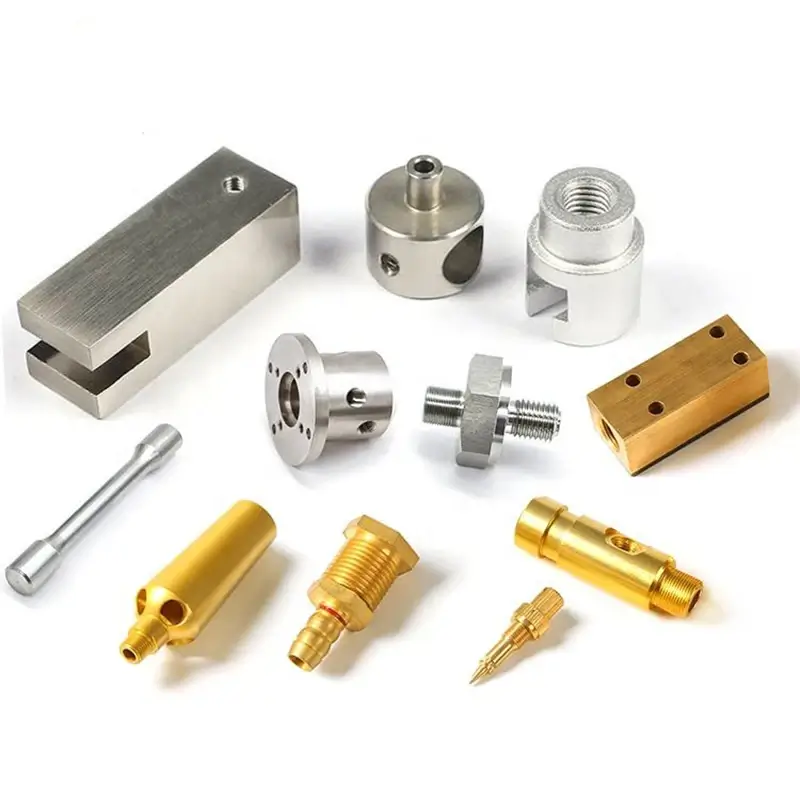
3.CNC Machined Parts Tolerances
CNC machined parts tolerances refer to the acceptable deviation from a specified dimension. Some of the factors that affect CNC machined parts tolerances include:
- Machining method
- Materials used
- Complexity of the design
- Cost impact
CNC machining is known for its excellent ability to produce parts with tight tolerances. This is very useful, especially for critical dimensions such as diameter, length, and hole size. Adherence to the specified machining tolerances is essential to the function of the part. Tighter tolerances require precise CNC machining procedures, which increases production costs.
Conversely, looser tolerances allow for looser machining methods, but may affect part performance. These looser specifications are common in prototypes and non-machined parts.
4.CNC Machined Parts Surface Finish
After the CNC machining process, we may treat the surface of machined parts to enhance their appearance and texture. Surface finishes serve both functional and aesthetic purposes.
1) Machined Surfaces
As the name implies, machined surfaces are not treated in any way after CNC machining. Instead, they remain as is and retain their natural surface finish. Machined surfaces are often used for internal parts because they only contribute to functionality, not aesthetics.
2) Sandblasting
Sandblasting uses abrasives to create a matte surface on machined parts. The final surface finish will vary depending on the roughness.
Sandblasting is not suitable for precision machined parts. This is because it changes the geometry of the part by removing material.
3) Anodizing
After CNC machining services, we may anodize the final part. Anodizing is a treatment process commonly used for aluminum machined parts. The process produces a strong, corrosion-resistant surface. The coating also provides wear resistance to the part.
4) Powder coating
This surface treatment method requires applying powder coating to the surface of the machined part and then baking it in an oven. The resulting wear-resistant, corrosion-resistant layer is more durable than a paint coating. Powder coating also comes in a variety of beautiful colors, so it can produce beautiful custom machined parts.
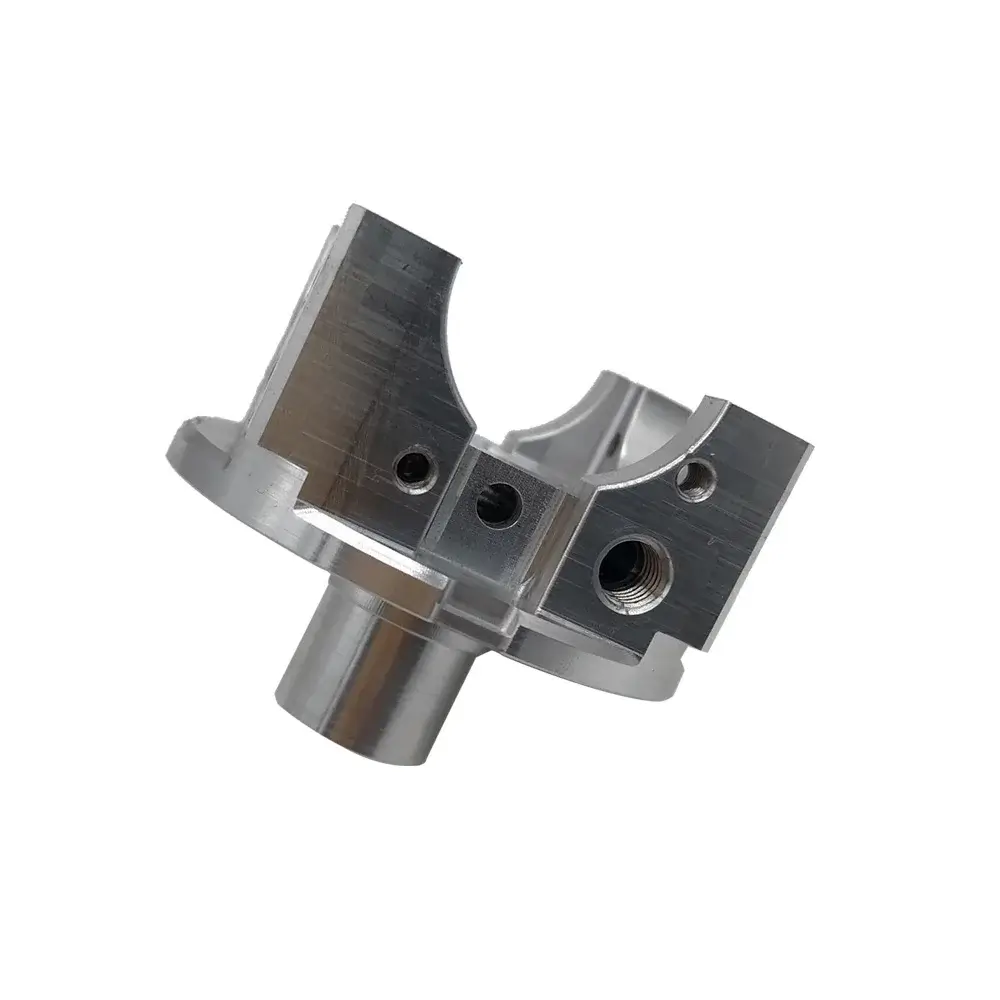
5.Advantages of machined parts
CNC machined parts have a variety of advantages over parts made using other production processes. In this section, I will describe some of these advantages.
1) No minimum order quantity
One of the most significant advantages of CNC machined parts is that there is no minimum order quantity or minimum order quantity. This means that we can efficiently manufacture small batches or even one-off custom parts at a relatively low cost.
This is not always possible with other manufacturing methods. For example, for molded parts, metal molds need to be made first. This is an expensive process, so it is not cost-effective to manufacture some custom parts.
Since there is no minimum order quantity for machined parts, CNC machining is suitable for businesses with different quantity requirements, custom designs, and prototyping. This brings me to my second point.
2) Good prototypes
The outstanding features of CNC machining are its precision and speed. We can produce high-quality prototypes quickly and with high precision. Such prototypes are similar to the final product, which is very useful in the evaluation and design verification process.
Rapid prototyping can also create multiple variations of a part for testing and verification processes. We will then manufacture CNC machined parts based on the prototype with the best performance.
This is not always possible with other manufacturing methods. For example, for molded parts, metal molds need to be made first. This is an expensive process, so it is not cost-effective to manufacture some custom parts.
Since there is no minimum order quantity for machined parts, CNC machining is suitable for businesses with different quantity requirements, custom designs, and prototyping. This brings me to my second point.
3) Design freedom
CNC machining provides unparalleled design freedom. We can manufacture high-precision mechanical parts with complex details and fine geometries.
This makes it possible to realize those imaginative concepts that would otherwise be difficult or impossible to realize. The flexibility afforded by CNC machining services facilitates the creation of custom machined parts.
4) Quality
CNC machining enables us to manufacture top-quality CNC machined parts. The production process meets tight tolerances, excellent surface finish, precision, and the highest quality standards. As a result, you can expect components that meet your design specifications exactly.
This aspect makes CNC machining the production process of choice for industries such as aerospace, medical, and military where high-quality parts are essential.
5) Lead Time
The lead time for CNC machining is very short. The design and prototyping process can be completed relatively quickly, especially since there is no lengthy machining process required like other production methods.
Once the prototype is approved, we begin production of the part. Again, the manufacturing process is fast and efficient, which means shorter lead times. Businesses that choose CNC machined parts tend to experience a shorter time to market, which is a competitive advantage.
6) Modifications
Sometimes, adjustments to the part design are required. Since CNC machined parts are manufactured using digital CAD files, it is relatively easy to make these changes. All we have to do is update the technical drawings and then produce the new part to the revised specifications.
Easy changes effectively reduce the cost and duration of CNC machining services. These simple adjustments also give CNC machining an advantage over other production processes. For example, if a molding modification is required, it may mean a lot of reworking. Of course, this will have a significant impact on cost and time.
7) Strength
Performance and durability are always the focus of attention during the part manufacturing process. CNC machined parts tend to be stronger and more resilient than parts produced using other processes. This is because CNC machining does not cause internal stresses that are common in other production methods.
In addition, CNC machined parts are made from a solid block of material, which makes the part structure stronger and more durable.
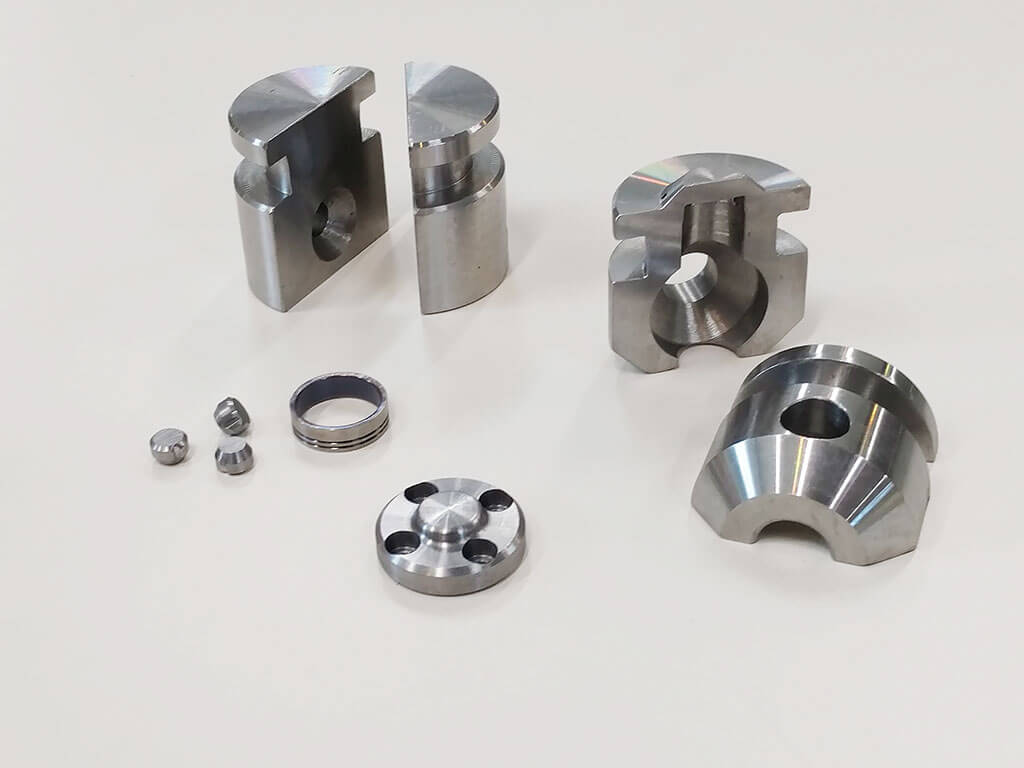
6.Guidelines for the design of CNC machined parts
1) Undercuts
Undercuts are features that cannot be created using standard cutting tools. Parts often obstruct some surfaces, making them inaccessible from the top.
There are two types of chamfers: T-slots and dovetail slots. To process such cuts, we need to use specialized cutting tools. Chamfers can range in width from 3 to 40 mm. Chamfer depth should not exceed twice its width.
In addition, if the design has undercuts on the inner wall, you need to consider clearance for the cutting tool. A general rule is to ensure that the space between the machined wall and the inner wall is at least four times the depth of the undercut.
I recommend sticking to standard sizes (i.e. whole millimeters) for undercut dimensions. This is because cutting tools come in standard sizes.
If the design features non-standard undercuts, the manufacturer will need to create a custom cutting tool first. Of course, this will increase lead time and production costs. If speed and cost are concerns for your business, I recommend avoiding this type of undercut.
2) Chamber Wall Thickness
If the wall thickness is too large, injection molded parts are prone to warping. The opposite is true for CNC machined parts. Too little thickness results in reduced part rigidity and more vibration during CNC machining. Overall, this tends to reduce the accuracy that can be achieved.
For metal machined parts, a wall thickness of 0.8 mm is recommended. Plastic machined parts should have a wall thickness of at least 1.5 mm. If you choose a lower wall thickness, plastic parts tend to deform (due to residual stresses) and soften due to higher temperatures.
If possible, choose a larger minimum wall thickness for your design. However, if this is not feasible, you can choose other manufacturing methods, such as injection molding.
3) Protrusions
Protruding features are difficult to achieve during machining. Just like thin walls, these features are easily damaged by vibration during machining. In addition, vibration may reduce the achievable accuracy. A good rule of thumb is to ensure that the height of the protrusion is no more than four times its width.
4) Cavities, holes, and threads
Hole and cavity on the part will vary depending on the tool. The recommended cavity depth is 4 times its width. The shallower the cavity, the greater the vibration. With deeper cavities, you may also get rounded edges instead of sharp edges.
CNC technology can cut threads up to M6. When designing threaded features, remember that the thread length should be at least 1.5 times its diameter. But the recommended thread length is 3 times its diameter. Any length longer than this value is actually meaningless. This is because the first few teeth take most of the load.
Holes are usually made with a drill or end mill. Since drills come in standard sizes, I recommend using a hole diameter that matches the standard drill size. Also, keep in mind that the maximum recommended depth of a hole is 4 times its diameter.
5) Scale
The size of a machinable part is defined by the machine working envelope, which varies depending on the type of material and CNC machine being deployed. Milled parts typically measure up to 400 x 250 x150 mm. Turned parts can measure up to ⌀ 500 mm x 1000 mm.
If you use a larger machine, you can make larger parts. You can consult with a manufacturing partner before proceeding with a custom CNC machining process.
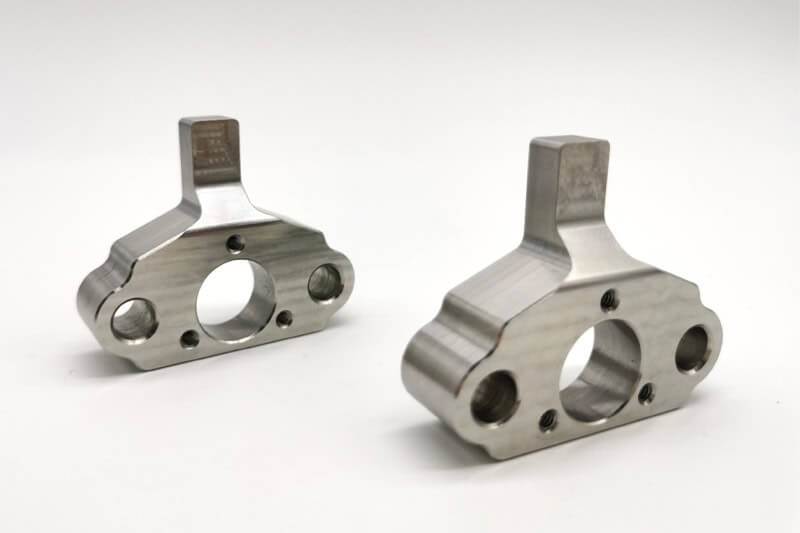
7.Conclusion
CNC machining has transformed industrial part production. It offers many advantages, including no minimum order quantity, rapid prototyping, shorter lead times, and better quality control. Online CNC machining services make it more convenient to get quality CNC machined parts.
